- Home
- Patricia Cornwell
Port Mortuary (2010) ks-18
Port Mortuary (2010) ks-18 Read online
Port Mortuary (2010)
( Kay Scarpetta - 18 )
Patricia Cornwell
Port Mortuary, the title of Patricia Cornwell's 18th Scarpetta novel, is literally a port for the dead. In this fast-paced story, a treacherous path from Scarpetta's past merges with the high tech highway she now finds herself on. We travel back to the beginning of her professional career, when she enlisted in the Air Force to pay off her medical school debt and found herself ensnared in a gruesome case of what seemed to be vicious, racially motivated hate crimes against two Americans in South Africa. Now, more than twenty years and many career successes later, her secret military ties have drawn her to Dover Air Force Base, where she has been immersed in a training fellowship to master the art of CT-assisted virtual autopsy--a procedure the White House has mandated that she introduce in the private sector.
As the chief of the new Cambridge Forensic Center in Massachusetts, a joint venture of the state and federal governments and MIT, Scarpetta is confronted with a case that could shut down her new facility and ruin her personally and professionally. A young man drops dead, apparently from a cardiac arrhythmia, eerily close to Scarpetta's new Cambridge home. But when his body is examined the next morning, there are stunning indications that he may have been alive when he was zipped inside a pouch and locked insider the Center's cooler. Various 3-D radiology scans reveal more shocking details about internal injuries unlike any Scarpetta has ever seen. These suggest the possibility of a conspiracy to cause mass casualties. She realizes that she is fighting a cunning and cruel enemy that is invisible as she races against time to discover who and why before more people die.
In Port Mortuary, Patricia Cornwell brings Scarpetta together with Marino, Benton, and Lucy in an intimate way that is reminiscent of the early novels, and we welcome a voice we haven't heard in years. The point of view is Scarpetta's, and this is her story.
ALSO BY PATRICIA CORNWELL
THE SCARPETTA NOVELS
Postmortem
Body of Evidence
All That Remains
Cruel and Unusual
The Body Farm
From Potter’s Field
Cause of Death
Unnatural Exposure
Point of Origin
Black Notice
The Last Precinct
Blow Fly
Trace
Predator
Book of the Dead
Scarpetta
The Scarpetta Factor
ANDY BRAZIL SERIES
Hornet’s Nest
Southern Cross
Isle of Dogs
WIN GARANO SERIES
At Risk
The Front
NON-FICTION
Portrait of a Killer: Jack the Ripper - Case Closed
BIOGRAPHY
Ruth, a Portrait: The Story of Ruth Bell Graham
OTHER WORKS
Food to Die For: Secrets from Kay Scarpetta’s Kitchen
Life’s Little Fable
Scarpetta’s Winter Table
A NOTE TO MY READERS
While this is a work of fiction, it is not science fiction. The medical and forensic procedures, and technologies and weapons, you are about to see exist now, even as you read this work. Some of what you are about to encounter is extremely disturbing. All of it is possible.
Also real and fully operational at this writing are various entities, including the following:
Port Mortuary at Dover Air Force Base
Armed Forces Medical Examiner (AFME)
Armed Forces DNA Identification Laboratory (AFDIL)
Armed Forces Institute of Pathology (AFIP)
Department of Defense (DoD)
Defense Advanced Research Projects Agency (DARPA)
Royal United Services Institute (RUSI)
Special Weapons Observation Remote Direct-Action System (SWORDS)
Although completely within the realm of possibility, the Cambridge Forensic Center (CFC), the Chatham Correctional Institute, Otwahl Technologies, and the Mortuary Operational Removal Transport (MORT) are creations of the author’s imagination, as are all of the characters in this story and the plot itself.
My Thanks -
To all the fine men and women of the Armed Forces Medical Examiner System and the Armed Forces Institute of Pathology, who have been kind enough during my career to share their insights and highly advanced knowledge, and to impress me with their discipline, their integrity, and their friendship.
As always, I’m deeply indebted to Dr. Staci Gruber, director of the Cognitive and Clinical Neuroimaging Core, McLean Hospital, and assistant professor, Harvard Medical School, Department of Psychiatry.
And, of course, my gratitude to Dr. Marcella Fierro, former chief medical examiner of Virginia, and Dr. Jamie Downs, medical examiner, Savannah, Georgia, for their expertise in all things pathological.
TO STACI
You have to live with me
while I live it—
1
Inside the changing room for female staff, I toss soiled scrubs into a biohazard hamper and strip off the rest of my clothes and medical clogs. I wonder if Col. Scarpetta stenciled in black on my locker will be removed the minute I return to New England in the morning. The thought hadn’t entered my mind before now, and it bothers me. A part of me doesn’t want to leave this place.
Life at Dover Air Force Base has its comforts, despite six months of hard training and the bleakness of handling death daily on behalf of the US government. My stay here has been surprisingly uncomplicated. I can even say it’s been pleasant. I’m going to miss getting up before dawn in my modest room, dressing in cargo pants, a polo shirt, and boots, and walking in the cold dark across the parking lot to the golf course clubhouse for coffee and something to eat before driving to Port Mortuary, where I’m not in charge. When I’m on duty for the armed forces medical examiner, the AFME, I’m no longer a chief. In fact, I’m outranked by quite a number of people, and critical decisions aren’t mine to make, assuming I’m even asked. Not so when I return to Massachusetts, where I’m depended on by everyone.
It’s Monday, February 8. The wall clock above the shiny white sinks reads 16:33 hours, lit up red like a warning. In less than ninety minutes I’m supposed to appear on CNN and explain what a forensic radiologic pathologist, or RadPath, is and why I’ve become one, and what Dover and the Department of Defense and the White House have to do with it. In other words, I’m not just a medical examiner anymore, I suppose I’ll say, and not just a habeas reservist with the AFME, either. Since 9/11, since the United States invaded Iraq, and now the surge of troops in Afghanistan —I rehearse points I should make—the line between the military and civilian worlds has forever faded. An example I might give: This past November during a forty-eight-hour period, thirteen fallen warriors were flown here from the Middle East, and just as many casualties arrived from Fort Hood, Texas. Mass casualty isn’t restricted to the battlefield, although I’m no longer sure what constitutes a battlefield. Maybe every place is one, I will say on TV. Our homes, our schools, our churches, commercial aircraft, and where we work, shop, and go on vacation.
I sort through toiletries as I sort through comments I need to make about 3-D imaging radiology, the use of computerized tomography, or CT, scans in the morgue, and I remind myself to emphasize that although my new headquarters in Cambridge, Massachusetts, is the first civilian facility in the United States to do virtual autopsies, Baltimore will be next, and eventually the trend will spread. The traditional postmortem examination of dissect as you go and take photographs after the fact and hope you don’t miss something or introduce an artifact can be dramatically improved by technology and made more precise, and it s
hould be.
I’m sorry I’m not doing World News tonight, because now that I think of it, I’d rather have this dialogue with Diane Sawyer. The problem with my being a regular on CNN is that familiarity often breeds contempt, and I should have thought about this before now. The interview could get personal, it occurs to me, and I should have mentioned the possibility to General Briggs. I should have told him what happened this morning when the irate mother of a dead soldier ripped into me over the phone, accusing me of hate crimes and threatening to take her complaints to the media.
Metal bangs like a gunshot as I shut my locker door. I pad over tan tile that always feels cool and smooth beneath my bare feet, carrying my plastic basket of olive-oil shampoo and conditioner, and an exfoliant scrub made of fossilized marine algae, a safety razor, a can of shaving gel for sensitive skin, liquid detergent, a washcloth, mouthwash, a toothbrush, a nail brush, and fragrant Neutrogena oil I’ll use when I’m done. Inside an open stall, I neatly arrange my personal effects on the tile ledge and turn on the water as hot as I can stand it, hard spray blasting as I move around to get all of me, then lifting my face up, then looking down at the floor, at my own pale feet. I let water pound the back of my neck and head in hopes that stiff muscles will relax a little as I mentally enter the closet inside my base lodging and explore what to wear.
General Briggs—John, as I refer to him when we’re alone— wants me in an Airman Battle Uniform, or better yet, Air Force blues, and I disagree. I should wear civilian clothes, what people see me in most of the time when I do television interviews, probably a simple dark suit and ivory blouse with a collar, and the understated Breguet watch on a leather strap that my niece, Lucy, gave me. Not the Blancpain with its oversized black face and ceramic bezel, which also is from her, because she’s obsessed with timepieces, with anything technically complicated and expensive. Not pants but a skirt and heels, so I come across as nonthreatening and accessible, a trick I learned long ago in court. For some reason, jurors like to see my legs while I describe in graphic anatomical detail fatal wounds and the agonal last moments of a victim’s life. Briggs will be displeased with my choice in attire, but I reminded him during the Super Bowl last night when we were having drinks that a man shouldn’t tell a woman what to wear unless he’s Ralph Lauren.
The steam in my shower stall shifts, disturbed by a draft, and I think I hear someone. Instantly, I’m annoyed. It could be anyone, any military personnel, doctor or otherwise, whoever is authorized to be inside this highly classified facility and in need of a toilet or a disinfecting or a change of clothes. I think about colleagues I was just with in the main autopsy room and have a feeling it’s Captain Avallone again. She was an unavoidable presence much of the morning during the CT scan, as if I don’t know how to do one after all this, and she drifted like ground fog around my work station the rest of the day. It’s probably she who’s just come in. Then I’m sure, because it’s always her, and I feel a clenching of resentment. Go away.
“Dr. Scarpetta?” her familiar voice calls out, a voice that is bland and lacking in passion and seems to follow me everywhere. “You have a phone call.”
“I just got in,” I shout over the loud spatter of water.
It’s my way of telling her to leave me be. A little privacy, please. I don’t want to see Captain Avallone or anyone right now, and it has nothing to do with being naked.
“Sorry, ma’am. But Pete Marino needs to talk to you.” Her unemphatic voice moves closer.
“He’ll have to wait,” I yell.
“He says it’s important.”
“Can you ask him what he wants?”
“He just says it’s important, ma’am.”
I promise to get back to him shortly, and I probably sound rude but despite my best intentions, I can’t always be charming. Pete Marino is an investigator I’ve worked with half my life. I hope nothing terrible has happened back home. No, he would make sure I knew if there was a real emergency, if something was wrong with my husband, Benton; with Lucy; or if there was a major problem at the Cambridge Forensic Center, which I’ve been appointed to head. Marino would do more than simply ask someone to let me know he’s on the phone and it’s important. This is nothing more than his usual poor impulse control, I decide. When he thinks a thought, he feels he must share it with me instantly.
I open my mouth wide, rinsing out the taste of decomposing charred human flesh that is trapped in the back of my throat. The stench of what I worked on today rises on swells of steam deep into my sinuses, the molecules of putrid biology in the shower with me. I scrub under my nails with antibacterial soap I squirt from a bottle, the same stuff I use on dishes or to decon my boots at a scene, and brush my teeth, gums, and tongue with Listerine. I wash inside my nostrils as far up as I can reach, scouring every inch of my flesh, then I wash my hair, not once but twice, and the stench is still there. I can’t seem to get clean.
The name of the dead soldier I just took care of is Peter Gabriel, like the legendary rock star, only this Peter Gabriel was a private first class in the army and had been in the Badghis Province of Afghanistan not even a month when a roadside bomb improvised from plastic sewer pipe packed with PE-4 and capped with a copper plate punched through the armor of his Humvee, creating a molten firestorm inside it. PFC Gabriel took up most of my last day here at this huge high-tech place where the armed forces pathologists and scientists routinely get involved in cases most members of the public don’t associate with us: the assassination of JFK; the recent DNA identifications of the Romanov family and the crew members of the H.L. Hunley submarine that sank during the Civil War. We’re a noble but little-known organization with roots reaching back to 1862, to the Army Medical Museum, whose surgeons attended to the mortally wounded Abraham Lincoln and performed his autopsy, and I should say all this on CNN. Focus on the positive. Forget what Mrs. Gabriel said. I’m not a monster or a bigot. You can’t blame the poor woman for being upset, I tell myself. She just lost her only child. The Gabriels are black. How would you feel, for God’s sake? Of course you’re not a racist.
I sense a presence again. Someone has entered the changing room, which I’ve managed to fog up like a steam shower. My heart is beating hard because of the heat.
“Dr. Scarpetta?” Captain Avallone sounds less tentative, as if she has news.
I turn off the water and step out of my stall, grabbing a towel to wrap up in. Captain Avallone is an indistinct presence hovering in haze near the sinks and motion-sensitive hand dryers. All I can make out is her dark hair and her khaki cargo pants and black polo shirt with its embroidered AFME gold-and-blue shield.
“Pete Marino…” she starts to say.
“I’ll call him in a minute.” I snatch another towel off a shelf.
“He’s here, ma’am.”
“What do you mean ‘here’?” I almost expect him to materialize in the changing room like some prehistoric creature emerging from the mist.
“He’s waiting for you out back by the bays, ma’am,” she informs me. “He’ll take you to the Eagle’s Rest so you can get your things.” She says it as if I’m being picked up by the FBI, as if I’ve been arrested or fired. “My instructions are to take you to him and assist in any way needed.”
Captain Avallone’s first name is Sophia. She’s army, just out of her radiology residency, and is always so damn military-correct and obsequiously polite as she lingers and loiters. Right now is not the time. I carry my toiletry basket, padding over tile, and she’s right behind me.
“I’m not supposed to leave until tomorrow, and going anywhere with Marino wasn’t part of my travel plans,” I tell her.
“I can take care of your vehicle, ma’am. I understand you’re not driving….”
“Did you ask him what the hell this is about?” I grab my hairbrush and my deodorant out of my locker.
“I tried, ma’am,” she says. “But he wasn’t helpful.”
A C-5 Galaxy roars overhead, on final for 19. The wind as usual is
out of the south.
One of many aeronautical principles I’ve learned from Lucy, who is a helicopter pilot among other things, is that runway numbers correspond to directions on a compass. Nineteen, for example, is 190 degrees, meaning the opposite end will be 01, oriented that way because of the Bernoulli effect and Newton’s laws of motion. It’s all about the speed air needs to flow over a wing, about taking off and landing into the wind, which in this part of Delaware blows in from the sea, from high pressure to low, from south to north. Day in and day out, transport planes bring the dead and take them away along a blacktop strip that runs like the River Styx behind Port Mortuary.
The shark-gray Galaxy is the length of a football field, so huge and heavy it seems scarcely to move in a pale sky of feathery clouds that pilots call mare’s tails. I would know what type of airlifter it is without looking, can recognize the high pitch of its scream and whistle. By now I know the sound of turbine engines producing a hundred and sixty thousand pounds of thrust, can identify a C-5 or a C-17 when it’s miles out, and I know helicopters and tilt rotors, too, can tell a Chinook from a Black Hawk or an Osprey. During nice weather when I have a few moments to spare, I sit on a bench outside my lodging and watch the flying machines of Dover as if they’re exotic creatures, such as manatees or elephants or prehistoric birds. I never tire of their lumbering drama and thundering noise, and the shadows they cast as they pass over.
Wheels touch down in puffs of smoke so close by I feel the rumble in my hollow organs as I walk across the receiving area with its four enormous bays, high privacy wall, and backup generators. I approach a blue van I’ve never seen before, and Pete Marino makes no move to greet me or open my door, and this bodes nothing one way or another. He doesn’t waste his energy on manners, not that being gracious or particularly nice has ever been a priority of his for as long as I can remember. It’s been more than twenty years since the time when we first met in Richmond, Virginia, at the morgue. Or maybe it was a homicide scene where I first was confronted with him. I really can’t recall.

 Blow Fly
Blow Fly Unnatural Exposure
Unnatural Exposure The Bone Bed
The Bone Bed Book of the Dead
Book of the Dead Flesh and Blood: A Scarpetta Novel (Scarpetta Novels Book 22)
Flesh and Blood: A Scarpetta Novel (Scarpetta Novels Book 22)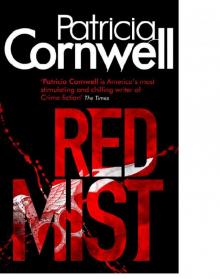 Red Mist
Red Mist Cruel & Unusual
Cruel & Unusual Hornet's Nest
Hornet's Nest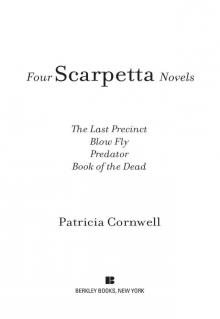 Four Scarpetta Novels
Four Scarpetta Novels Scarpetta's Winter Table
Scarpetta's Winter Table Isle of Dogs
Isle of Dogs Trace
Trace Postmortem
Postmortem Body of Evidence ks-2
Body of Evidence ks-2 Southern Cross
Southern Cross All That Remains
All That Remains Point of Origin
Point of Origin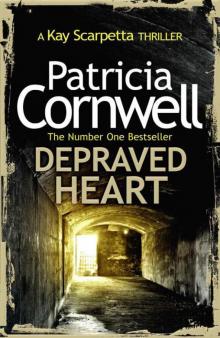 Depraved Heart
Depraved Heart Ruth, a Portrait: The Story of Ruth Bell Graham
Ruth, a Portrait: The Story of Ruth Bell Graham From Potter's Field
From Potter's Field Flesh and Blood
Flesh and Blood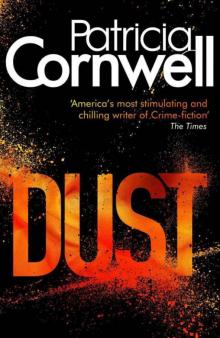 Dust
Dust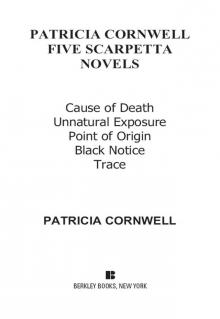 The Body Farm
The Body Farm Port Mortuary
Port Mortuary Quantum
Quantum Portrait of a Killer: Jack the Ripper - Case Closed
Portrait of a Killer: Jack the Ripper - Case Closed Spin (Captain Chase)
Spin (Captain Chase) Cause of Death
Cause of Death The Scarpetta Factor
The Scarpetta Factor Predator
Predator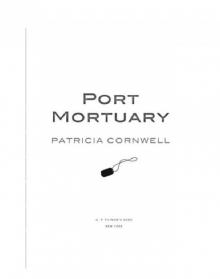 Scarpetta 18 - Port Mortuary
Scarpetta 18 - Port Mortuary Trace ks-13
Trace ks-13 Portrait of a Killer
Portrait of a Killer Cruel and Unusual ks-4
Cruel and Unusual ks-4 Cause Of Death ks-7
Cause Of Death ks-7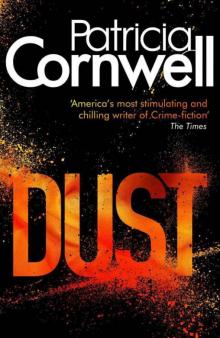 Dust ks-21
Dust ks-21 At Risk wg-1
At Risk wg-1 The Last Precinct ks-11
The Last Precinct ks-11 Book of the Dead ks-15
Book of the Dead ks-15 All That Remains ks-3
All That Remains ks-3 Ruth, a Portrait
Ruth, a Portrait Scarpetta's Winter Table (kay scarpetta)
Scarpetta's Winter Table (kay scarpetta) From Potter's Field ks-6
From Potter's Field ks-6 Scarpetta
Scarpetta Isle of Dogs jhabavw-3
Isle of Dogs jhabavw-3 Hornet's Nest jhabavw-1
Hornet's Nest jhabavw-1 The Body Farm ks-5
The Body Farm ks-5 Blow Fly ks-12
Blow Fly ks-12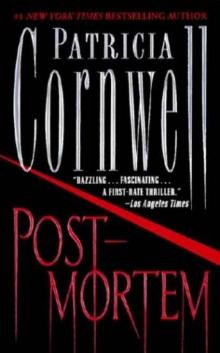 Post Mortem
Post Mortem Five Scarpetta Novels
Five Scarpetta Novels Chasing the Ripper (Kindle Single)
Chasing the Ripper (Kindle Single) Point of Origin ks-9
Point of Origin ks-9 Port Mortuary (2010)
Port Mortuary (2010) Unnatural Exposure ks-8
Unnatural Exposure ks-8 Southern Cross uhabavw-2
Southern Cross uhabavw-2 The Bone Bed ks-20
The Bone Bed ks-20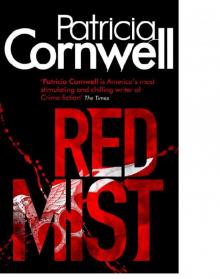 Red Mist ks-19
Red Mist ks-19 Port Mortuary (2010) ks-18
Port Mortuary (2010) ks-18 Predator ks-14
Predator ks-14